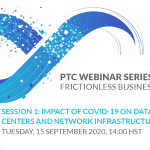 In August, we learned that goals matter. Not just any goals, but – post-pandemic – big, powerful, purposeful goals. Goals that bind and unite. Goals that speak to compelling futures and utilize the emerging global digital space to empower the planet.
In August, we learned that goals matter. Not just any goals, but – post-pandemic – big, powerful, purposeful goals. Goals that bind and unite. Goals that speak to compelling futures and utilize the emerging global digital space to empower the planet.
Some looked to space and saw opportunities for a “unifying, engaging, and compelling endeavor.” Others echoed the sentiment and emphasized possibilities in tech and public-private partnerships to make this reach possible. A go-to initiative for previous industrial strategies, the extension of human spaceflight as the big goal, was also under scrutiny.
We borrowed big picture ideas with metaphors drawn from past conflicts. “Can we now win the peace?” asked experts who attempted to identify lessons for the next normal. One central theme, however, always shines through: digital transformation is happening, even if we occasionally need guides in terms of what digital workplace transformation likely means, and what it actually looks like in practice.
Digital transformation on this scale is in its early days. So far, all we know is that it is likely to be big in scope, urgent in need, and prolific in intent. Rebalancing global value chains should be on the tech agenda. So too should the digitization of small business, argued one Asia-Pacific telco executive. Sustainability and inclusion joined data transformation as a theme cutting across sectors. Globally, smart cities rose to U.N. prominence. Some argued for a productive tech-based assault on the silver economy.
Is Asia–Pacific Getting Back to Business?
Observers said Asia-Pacific economies are now rebounding, if cautiously. Experts debated the emerging digital strategies in the region. However, some feared an economic “polarization” as an undesirable outcome. On the other hand, experts argued for making Asia-Pacific cities more liveable, especially if a long-predicted climate crisis threatens the region.
In subsea, Orient Link and NEC announced plans for the 8,100 km-long MIST Cable system connecting Singapore, Malaysia, Myanmar, Thailand, and India. There were reports of plans for another new cable system connecting Singapore, Indonesia, Guam, and possibly Darwin, Australia. The U.S. launched its Clean Network program with potential transpacific political ramifications.
In satellites, there were clear signs of changing times. Asia-Pacific operators, perhaps enthusiastic for GEO solutions, pressed LEO megaconstellation players on their prospects. On economics matters, we saw operators maximizing investment return and operating GEO systems beyond design lives. Commentators pondered a need for urgency in greening the launch industry.
In telco-land, long-term strategy in a changing landscape was a continuing debate, as were the many and varied challenges involved, particularly where future customer experiences are likely intelligent, personalized, and data-driven.
There were certainly big goals to chew on in August. But for some, those goals are now accomplished. In our region, we welcomed a milestone as DOCOMO Pacific announced the launch of 5G in Guam and Northern Mariana Islands.






